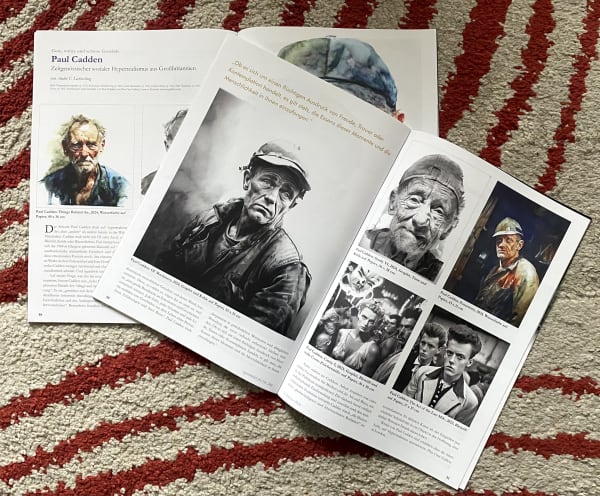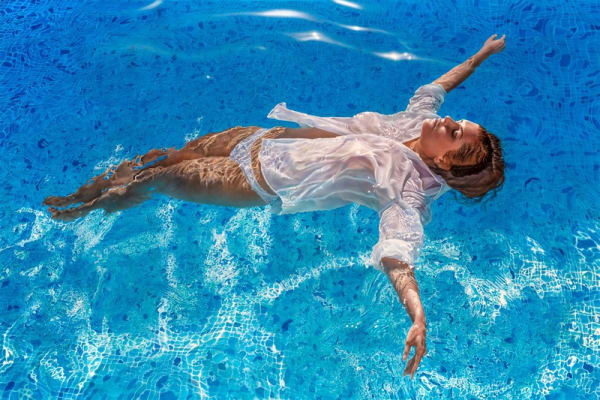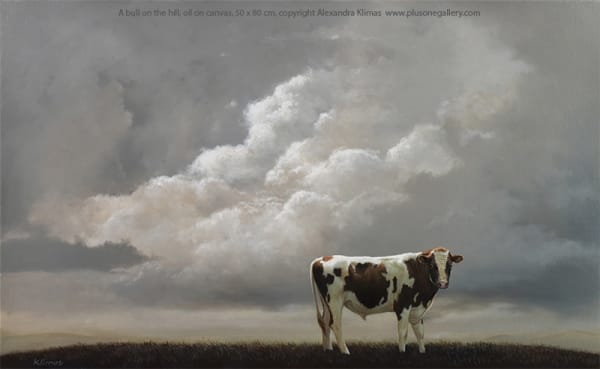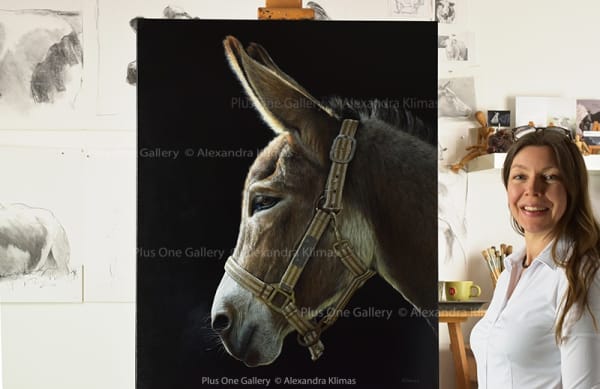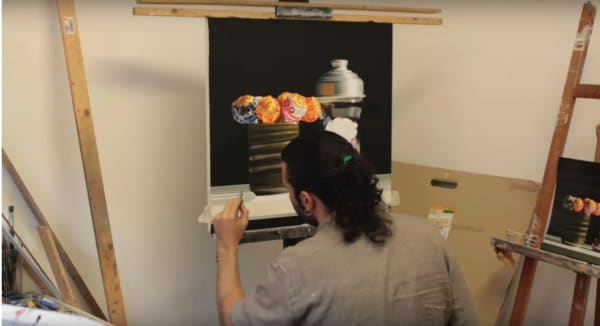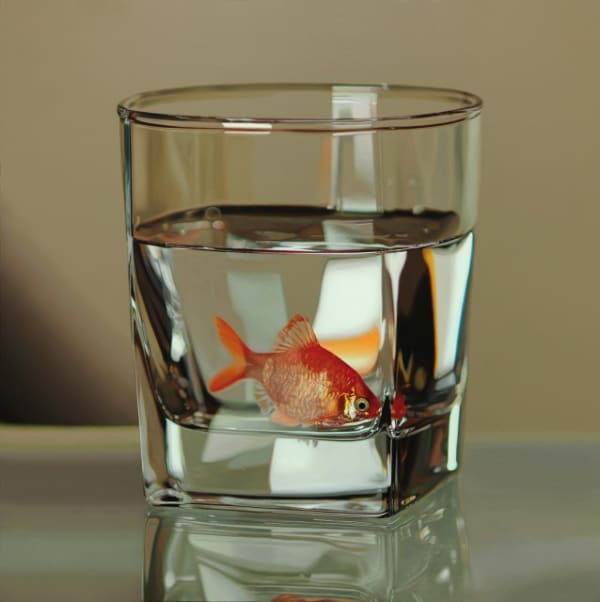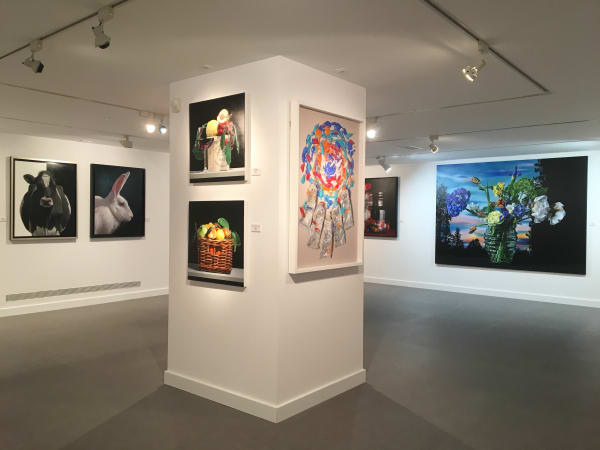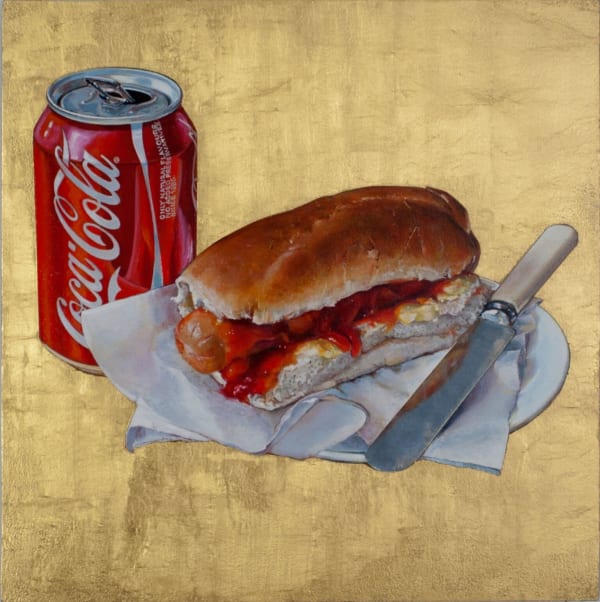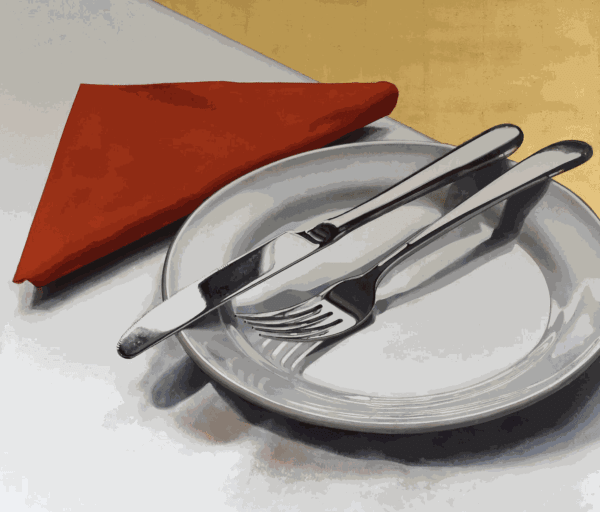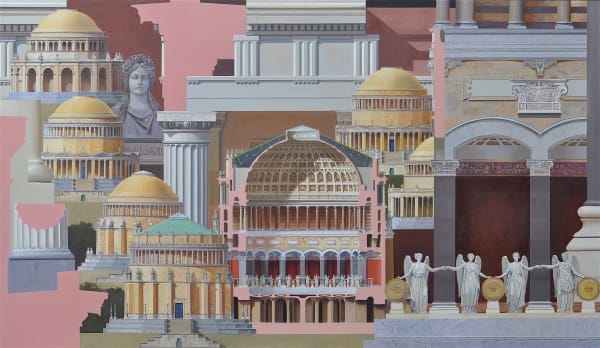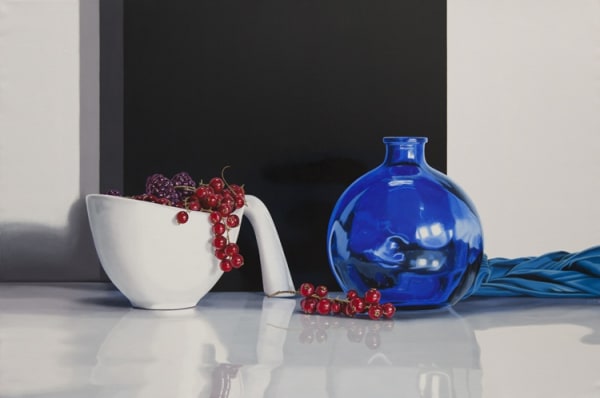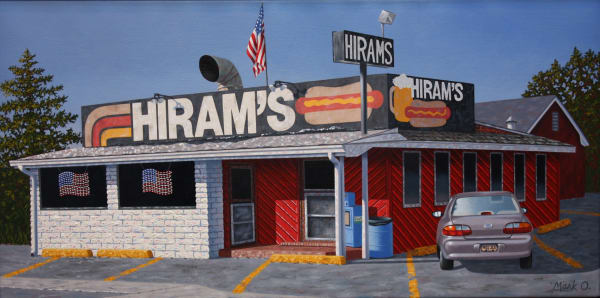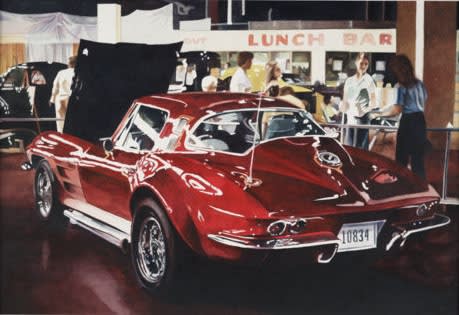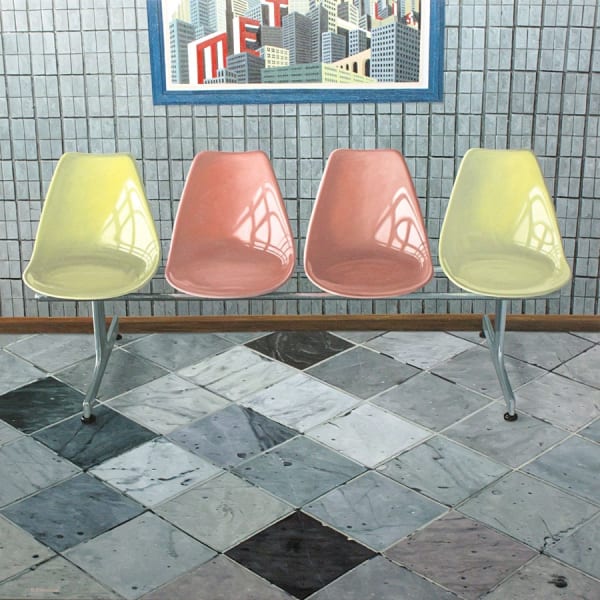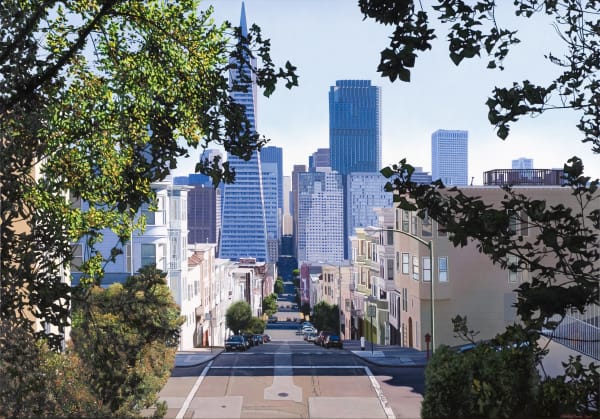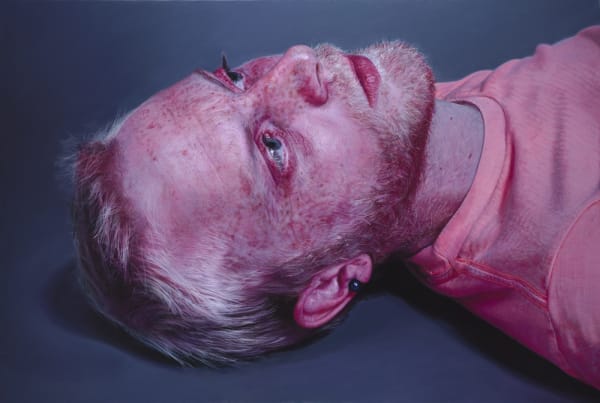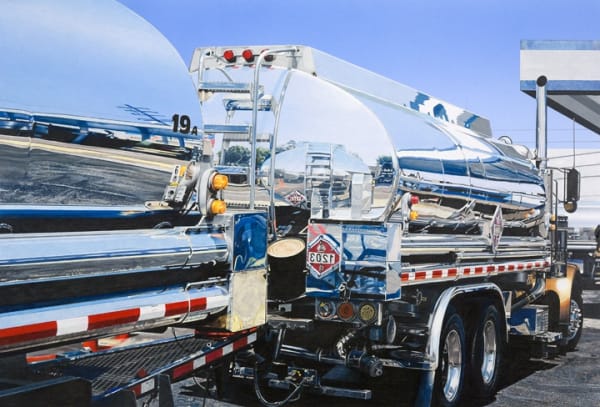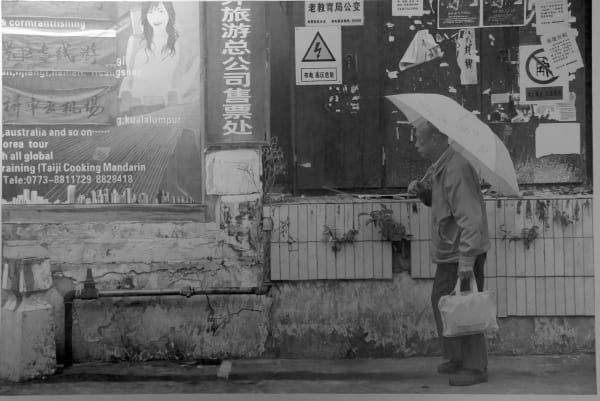In Hyperrealism, capturing the complete essence of a photograph can lead to surprising details in the final piece. Many pieces, typically the most well known, are painted or drawn from extremely high resolution photographs. This gives the images a awe inspiring clarity.
However, some of the finest works in the Realist field feature what some may misinterpret as flaws. For example, old photographs might feature watermarks or blemishes that are often included in hyperrealistic pieces. These are just as important as the subject when the artist has a quest for complete accuracy.
But what about those artist who use digital technology such as Photoshop before turning their photographs into paintings?
Editing creates an interpreted perspective
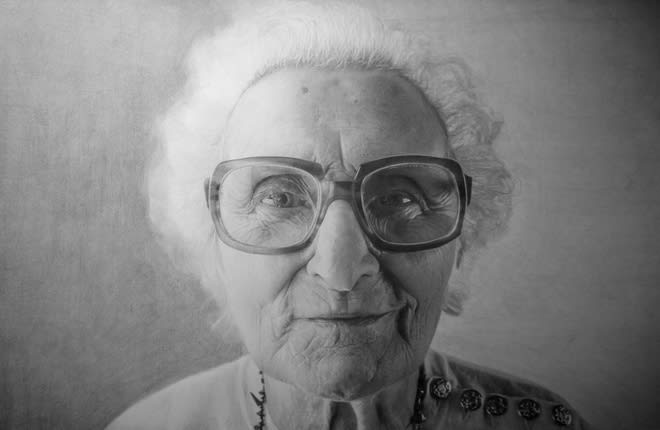
'For All And None' by Paul Cadden
Plus One Gallery’s upcoming exhibition, Paul Cadden: Solo Show features a set of portraits and landscapes in black and white. Each of the stunning pictures has the distinctly detailed look of a high resolution photograph. What is not immediately clear, but a significant factor, in each of the pieces, is that Cadden has edited the lighting of each.
Hyperrealism, as a movement, encourages artists to impose their feelings and intentions through their work; more than in photorealism. In this way we can see Cadden’s images are taking on a different life. Without the highlights, white balance and shadow changes, these images would look very different.
Photoshop is a tool of future art

'Road King' by Andrew Holmes
Technological advancements have allowed users to create near realistic looking imagery as art, in films and video games. Photoshop is, on the other hand, a tool that is often used for adding your own personal perspective onto a real image.
Photoshop is a more digital-based opportunity for implementing what numerous hyperrealistic artists already do in their work. Andrew Holmes, for example, takes metal and metallic objects as his subjects for many of his pieces. His interpretation, making the user view the object as though it was unseen, means that he paints his reflections out of the photographs.
At once the image is spectacular, showing both what one might see in true life; due to the excellent, hyperrealistic rendition, but also an impossible image.
Hyperrealism is arguably affected by the use of photoshop, but it is done in a way that reinforces the very essence of the movement. It is allowing a view of photographs that is both true to life and what the artist wants viewers to see.
To book an appointment or for more information please contact us via email on maggie@plusonegallery.com and maria@plusonegallery.com
or by phone on 020 7730 7656.
or by phone on 020 7730 7656.



